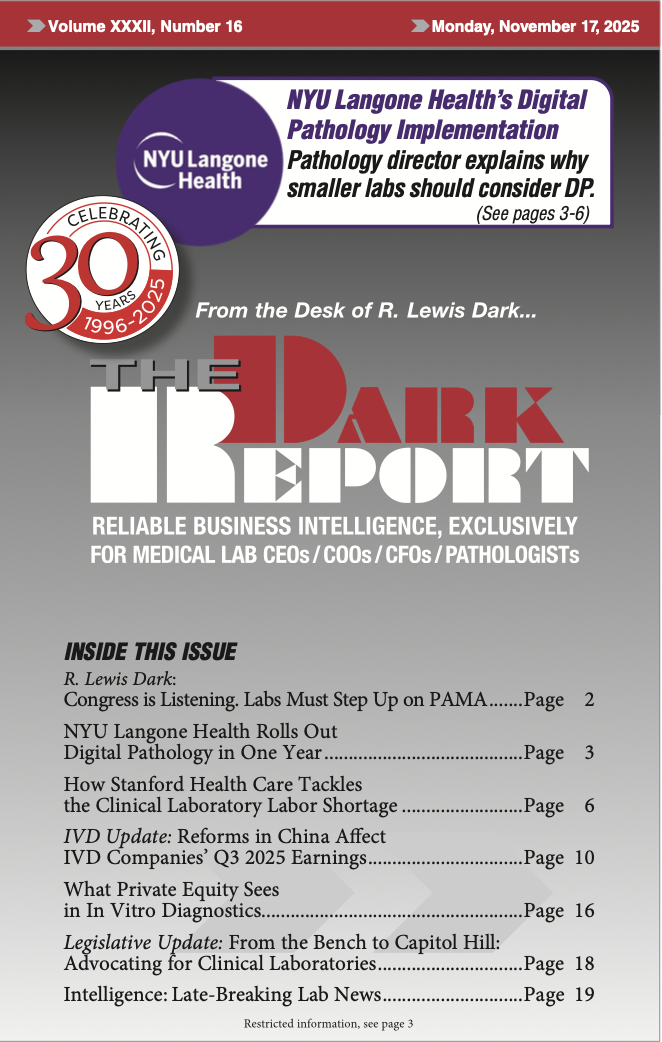TAG:
CPT® codes
The Current Procedural Terminology (CPT)® code set is a medical code set maintained by the American Medical Association through the CPT Editorial Panel. The CPT (copyright protected by the AMA) describes medical, surgical, and diagnostic services and is designed to communicate uniform information about medical services and procedures among physicians, coders, patients, accreditation organizations, and payers for administrative, financial, and analytical purposes.
CPT codes are a critical part of the laboratory billing process. They are similar to ICD-9 and ICD-10 coding, except that it identifies the services rendered rather than the diagnosis on the claim. CPT is currently identified by the Centers for Medicare and Medicaid Services (CMS) as Level 1 of the Healthcare Common Procedure Coding System (HCPCS).
The AMA’s CPT Editorial Panel engages in an ongoing process improvement effort that frequently includes re-examination of the CPT Category I and Category III criteria.
CPT Category I codes are the codes most used in clinical lab and pathology group billing. They are the five-digit numeric codes included in the main body of CPT. These codes represent procedures that are consistent with contemporary medical practice and are widely performed. Codes assigned to this category have met certain criteria including:
- Procedure or service approved by the Food and Drug Administration (FDA)
- Procedure or service commonly performed by health care professionals nationwide
- Procedure or service’s clinical efficacy is proven and documented
The use of the code is mandated by almost all health insurance payment and information systems, including the Centers for Medicare and Medicaid Services (CMS) and HIPAA, and the data for the code sets appears in the Federal Register.
After a clinical laboratory service is provided, diagnosis and procedure codes such as CPT codes are assigned to assist the insurance company in determining coverage and medical necessity of the services. Once the procedure and diagnosis codes are determined, the lab bill enters the laboratory collections/revenue cycle management phase.
Several Big Surprises in 2018’s Top 10 Lab Stories
By Robert Michel | From the Volume XXV No. 18 – December 24, 2018 Issue
CEO SUMMARY: This year’s list of the Top 10 Lab Industry Stories for 2018 is dominated by new directives from Medicare and private health insurers, as well as significant decisions by federal courts. Collectively, these developments create new compliance risks for all clinical laborator…
Health insurance fraud cases take new turn with HDL-BlueWave outcome
By Mary Van Doren | From the Volume XXV No. 3 – February 12, 2018 Issue
This is an excerpt from a 2,700-word article in the February 12, 2018, issue of THE DARK REPORT. The complete article is available for a limited time to all readers, and available at all times to paid members of the Dark Intelligence Group. CEO SUMMARY:…
Insights from Jury Verdict in HDL, BlueWave Case
By Robert Michel | From the Volume XXV No. 3 – February 12, 2018 Issue
CEO SUMMARY: After a two-week trial, the executives of Health Diagnostic Laboratories and BlueWave Healthcare Consultants were found guilty of violating the federal False Claims Act. Defendants Tonya Mallory, Floyd Calhoun Dent III, and Robert Bradford Johnson were ordered to pay the Unit…
In Florida, More Tests Added to UHC’s Decision-Support Program
By Joseph Burns | From the Volume XXV No. 1 – January 2, 2018 Issue
IN THE FIRST BROAD EXPANSION OF ITS pilot decision-support program for clinical lab testing in Florida, UnitedHealthcare (UHC) will add genetic and molecular tests, drug tests, and pathology procedures, among other assays starting in two months. On March 1, UHC will expand its labor…
Price Cuts, Long Delays in Payment Are Expected – December 31, 2012
By R. Lewis Dark | From the Volume XIX No. 18 – December 31, 2012 Issue
CEO SUMMARY: In addition to a steep cut in the 88305 CPT code, anatomic pathology laboratories can expect cuts in the payment from Medicare for molecular and prostate biopsy testing. Two national experts in lab billing and reimbursement warn labs to expect confusion in how both pub…
Are Labs Facing a Collapse in Test Prices?
By R. Lewis Dark | From the Volume XXII No. 6 – April 20, 2015 Issue
IS IT REASONABLE, AT THIS TIME, TO ASK IF THE LAB INDUSTRY IS FACING a potential collapse in lab testing pricing? Were I to have asked that question several years ago, most of you would probably have responded with skepticism. But how the times have changed! Take the Protecting Access to Medicare Ac…
Healthcare Cost Solutions Will Continue to Pinch Lab Industry Revenues in 2015
By Mary Van Doren | From the Volume XXII No. 1 – January 5, 2015 Issue
CEO SUMMARY: Will 2015 turn out to be a watershed year for the clinical laboratory industry? With healthcare cost solutions continuing to squeeze laboratory profits, two federal agencies are pushing forw…
Lab Industry to Confront Major Issues during 2015
By Robert Michel | From the Volume XXII No. 1 – January 5, 2015 Issue
CEO SUMMARY: Will 2015 turn out to be a watershed year for the clinical laboratory industry? Not only are two federal agencies pushing forward with initiatives that will touch nearly every medical lab in the United States in the next 12 months, but other equally powerful trends c…
CURRENT ISSUE

Volume XXXII, Number 16 – November 17, 2025
The Dark Report offers insights into innovative ways to engage employees, streamline workflows, and build talent pipelines. Standard Health Care’s Jennifer Fralick outlines strategies to retain talent and improve efficiency. Also, The Dark Report provides a review of NYU Langone Health’s Digital Pathology Implementation, and the Pathology director explains why smaller labs should consider DP.
See the full table of contentsHow Much Laboratory Business Intelligence Have You Missed?
Lab leaders rely on THE DARK REPORT for actionable intelligence on important developments in the business of laboratory testing. Maximize the money you make-and the money you keep! Best of all, it is released every three weeks!
Sign up for TDR Insider
Join the Dark Intelligence Group FREE and get TDR Insider FREE!
Never miss a single update on the issues that matter to you and your business.
Topics
- Anatomic Pathology
- Clinical Chemistry
- Clinical Laboratory
- Clinical Laboratory Trends
- Digital Pathology
- Genetic Testing
- In Vitro Diagnostics
- IVD/Lab Informatics
- Lab Intelligence
- Lab Marketplace
- Lab Risk & Compliance
- Laboratory Automation
- Laboratory Billing
- Laboratory Compliance
- Laboratory Equipment
- Laboratory Information Systems
- Laboratory Management
- Lean Six Sigma
- Managed Care Contracts
- Molecular Diagnostics
- Pathology Trends
- People
- Uncategorized

